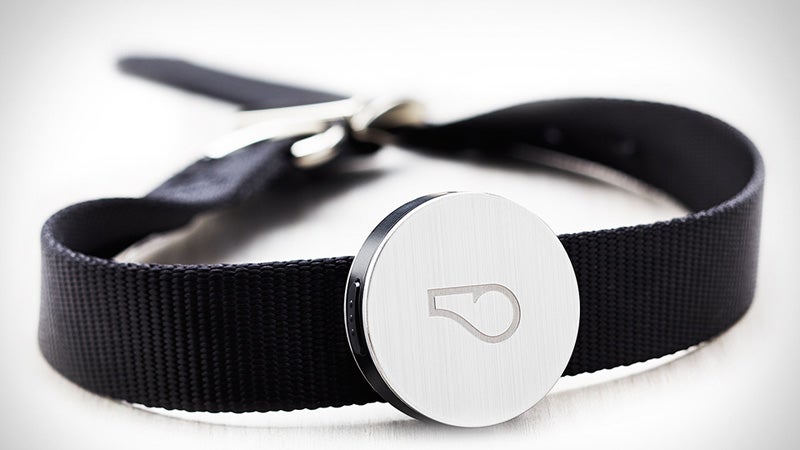Let’s face it. Many dog owners take better care of their pets than they do of themselves. So it was only a matter of time before the increasingly popular fitness trackers—Nike Fuelband, FitBit, Basis—found their way onto the collars of man’s best friend.
Currently, there are about six pet-monitoring devices on the market. The more advanced ones do everything from record active time and rest time to pinpoint your pooch with GPS (and alert you via text if the pup heads out of her designated area).
Yes, this all seems a bit gimmicky. But it’s also a surprisingly effective way to make sure your dog gets enough exercise. And, based on one anecdote, the tracker could save your dog’s life. But first our favorite—the
The Whistle, which debuted last fall and retails for $129, is your basic tracker. An accelerometer—housed in a stainless-steel, waterproof disc—attaches to a collar and keeps tabs on active time and rest time, arguably the two most important stats to track. (More on that in a bit.)
The device connects wirelessly to your smartphone via Bluetooth and will upload the data (it can store three-weeks worth) to the cloud via WiFi. It doesn’t have a GPS function like the popular ($100), but it also doesn’t require a monthly Verizon service plan, which Tagg does.
We also think it’s much more stylish than , which will retail for $99 when it comes out this spring.

The Whistle’s most effective feature is its easy-to-understand app—available for both Android and iOS. Instead of trying to get cute by offering points, it clearly states how many minutes your dog exercised and how many she rested.
You can also add extra owners to the app, so it knows who is taking the dog for a walk. After you feed Fido, hit a food bowl–shaped button and it will note what time the dog was fed, a smart idea to avoid over-feeding when more than one family member does the chore. There’s a similar button and notifications for medications.
After three weeks of testing the Whistle Activity Monitor on Nolie, a yellow lab, and Ammy, a New Mexico mutt, the takeaway is twofold. First off, the tracker didn’t break, which is somewhat shocking given how often the device was dunked in water, caked in snow and mud, and exposed to below freezing temps.
Secondly, the app’s algorithm does a good job of recognizing when we were on walks, when the dogs were playing together, and when they were sleeping versus hovering below my feet in the kitchen, waiting for a scrap to drop.
As mentioned before, arguably the most important stats are active time and rest time, both of which Whistle charts. It’s clear why active time—the number of minutes your dog spends exercising—is important. But what about rest time?
The accelerometer, which takes fifty measurements per second, is able to distinguish between the dog’s actual rest time and time walking around the house sniffing the trash bin. This is important because, just like us, dogs will lie around much more when they’re sick, and the Whistle can recognize when a dog has been resting more than usual.
Whistle cofounders, Ben Jacobs and Steve Eidelman, related a story to me about a dog on the East Coast named Ripley who appeared to be getting much more “rest” than usual. The app recognized this and sent a notice to his owner, who promptly brought the dog to the vet. Turns out the dog had a serious organ infection, but the vet was able to prescribe medication in time to save the dog’s life.
As the company continually updates its algorithm, the tracker will soon be able to identify even more nuanced movement that indicates potential health problems, such as arthritis or symptoms of a seizure. Whistle is already working with to determine canine movement patterns associated with seizures. One day soon, you may be able to get a notice at work that your dog suffered a grand mal at home. Veterinarians may even be able to glean information from the device about reactions to medication—information they likely couldn’t get otherwise.
So yes, fitness tracking for a dog can seem a bit gimmicky and, well, obsessive. And like wearable tech for humans, the hype is currently outpacing the reality. But the future is not far off, and it’s damn intriguing.
$129,
